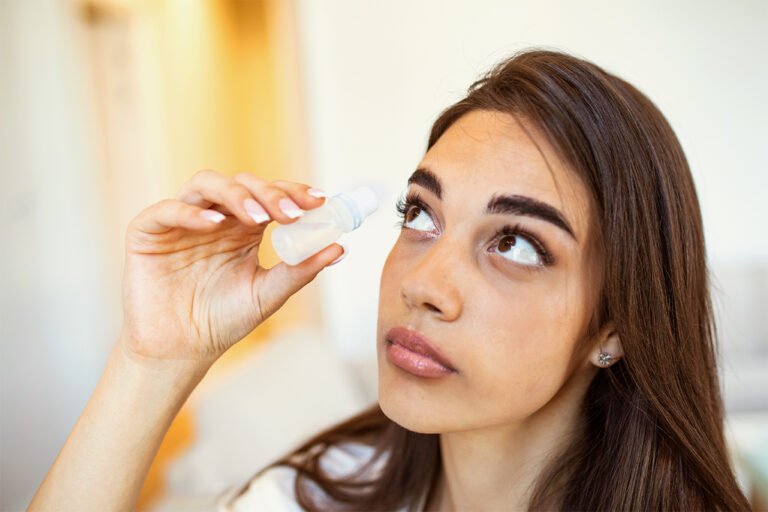Key Takeaways
- Adopting daily habits significantly contributes to maintaining long-term eye health.
- Simple practices, such as a balanced diet, regular breaks, and proper eyewear use, can prevent common eye issues.
- Frequent appointments with a specialist are vital for detecting possible problems early.
Table of Contents
- Eat Right for Good Sight
- The 20-20-20 Rule: A Simple Habit for Healthy Eyes
- Protect Your Eyes from Harmful UV Rays
- The Importance of Regular Eye Exams
- Proper Use of Digital Devices
- Stay Hydrated to Keep Eyes Moisturized
- Avoid Smoking for Clearer Vision
- Create an Ergonomic Workspace
Eat Right for Good Sight
Maintaining sound eye health long-term requires a well-rounded diet filled with essential nutrients. Foods rich in zinc, omega-3 fatty acids, and vitamins C and E can help prevent common age-related vision issues. Adding these nutrients to your regular meals can significantly help your eye health. Foods like leafy greens (spinach, kale), fatty fish (salmon, mackerel), and citrus fruits (oranges, lemons) are particularly beneficial. Additionally, ensuring you have regular primary eye care check-ups will help monitor and manage your eye health effectively. Consulting with a healthcare provider about incorporating these nutrients can provide personalized advice for maintaining optimal eye health.
The 20-20-20 Rule: A Simple Habit for Healthy Eyes
In the digital age, many spend extended periods in front of screens, whether for work, study, or leisure. Continually being exposed to screens can result in digital eye strain, bringing headaches, blurry vision, and dry eyes. To lessen these effects, the 20-20-20 guideline offers a straightforward solution: pause every 20 minutes, gaze at something 20 feet in the distance, and relax your eyes for 20 seconds. This technique aids in calming the muscles in the eyes and lessening tension. The American Optometric Association endorses this rule, emphasizing that regular breaks into your routine significantly benefit your eye comfort and health. Combined with ergonomic adjustments and adequate screen lighting, this simple habit is highly effective in maintaining visual well-being.
Protect Your Eyes from Harmful UV Rays
Over some time, prolonged exposure to the ultraviolet (UV) rays of the sun can lead to substantial and permanent harm to your eyes, amplifying the chances of cataracts and macular degeneration. The CDC recommends selecting sunglasses with full coverage, such as wraparound frames, for optimal protection. These sunglasses shield your eyes from peripheral light, reducing the risk of sun damage. Moreover, putting on a hat with a broad brim can offer additional defense. Making it a habit to wear proper eye protection anytime you are outdoors, even on cloudy days, ensures that your eyes remain healthy and guard against harmful UV exposure.
The Importance of Regular Eye Exams
The American Academy of Ophthalmology advises every adult over 40 to have a screening for eye diseases as a starting point. These tests can identify conditions like glaucoma, macular degeneration, and cataracts in their initial phase when they are easier to treat. Regular eye check-ups are essential for individuals with a family history of eye problems or those with diabetes and high blood pressure since these conditions can affect eye health. Your eye doctor can offer customized recommendations for preventive strategies and treatments to meet your requirements, ensuring you have a clear and healthy vision for life.
Proper Use of Digital Devices
With the increasing use of digital devices in our daily lives, it is essential to use them to minimize eye strain and discomfort. To achieve this, adjust the brightness of your screens to match the ambient lighting and consider increasing the text size to reduce strain on your eyes. Taking frequent breaks to rest your eyes, following the 20-20-20 rule, and ensuring that you blink regularly to keep your eyes lubricated are all effective strategies for mitigating the effects of prolonged screen use. Furthermore, utilizing blue light filters or computer glasses specifically made to decrease blue light exposure may provide additional protection for your eyes against digital strain.
Stay Hydrated to Keep Eyes Moisturized
Dehydration can lead to dry, irritated eyes, particularly in people who spend long hours in air-conditioned or heated environments. If you experience chronic dryness, using a humidifier in your living spaces can also help maintain moisture levels in the air, providing additional relief. Consuming foods high in water, such as cucumbers, watermelons, and oranges, can further contribute to staying hydrated and supporting your eye health.
Avoid Smoking for Clearer Vision
Smoking greatly harms eye health by significantly raising the chances of experiencing severe issues like cataracts, optic nerve damage, and age-related macular degeneration. The delicate parts of the eyes can be damaged by the dangerous chemicals in cigarette smoke, leading to long-lasting vision problems. Giving up smoking provides immediate and long-term advantages for your overall health and eyesight. Former smokers who have quit for several years can lower their risk of developing these eye conditions closer to the level of non-smokers. Seeking support from healthcare providers, utilizing smoking cessation programs, and adopting healthier lifestyle habits can ease the process of quitting and help preserve your vision for the future.
Create an Ergonomic Workspace
Creating an ergonomic workspace is essential for reducing eye strain and promoting overall well-being, especially if you spend extended periods working at a computer. Ensure your computer monitor is placed at arm’s length and slightly below eye level to keep a comfortable viewing angle. Proper lighting is also critical; use adjustable lamps to control the light intensity and avoid glare from windows or overhead lights. Using screen filters can help reduce screen glare and minimize eye strain. Purchasing an ergonomic chair that promotes good posture and incorporating frequent breaks for stretching and relaxation can help prevent discomfort and create a healthy workplace atmosphere. By making these adjustments, you can create a workspace that supports your eye health and enhances productivity.





